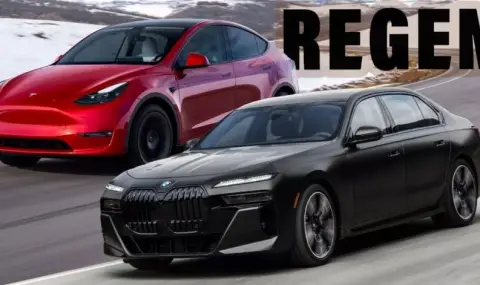It takes a lot of effort to bring a heavy electric car to a stop, although unlike diesel cars, electric cars can at least recover some of that energy to use later. But exactly how much energy do they restore?
Germany's ADAC tested three different EVs, which effectively represent the budget, mid-range and luxury segments of the EV market, and found that while the best EV can recover up to 50 percent of the energy spent on the same climb on a descent, 100 km trip, other electric cars can return no more than 35 percent.
The BMW i7 took top honors in this case, recovering 26.27kWh on a downhill Bavarian mountain road, while Dacia's cheap Spring returned just 7.05kWh. Tesla Model Y is below 40 percent recuperation to the battery - 17.6 kWh.

BMW's victory is due not only to more advanced electric motors, but also to the fact that the electric sedan is much heavier than other models, which means that it generates more energy when decelerating. In comparison, the Romanian electric car weighs only 1,180 kg, while the Tesla weighs 2,186 kg and the BMW electric sedan weighs 2,830 kg.
It is worth noting that the extreme climbs and descents experienced during this mountain test do not reflect the average type of driving that most EVs are subjected to, so ADAC is also preparing laboratory tests of 19 different EVs to see how they fare under WLTP cycle conditions.
